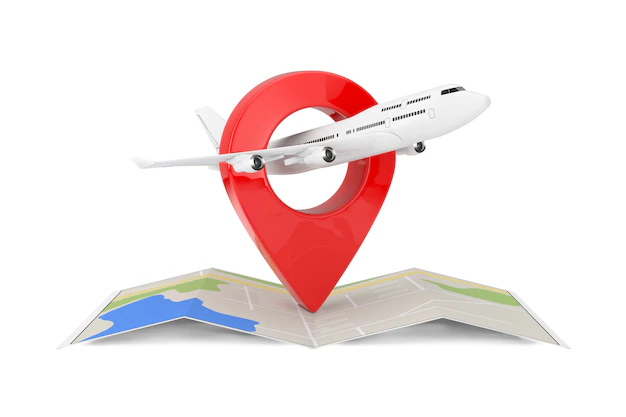These Are The 30+ Things To Do In Mexico City That You Must Try!
BY sagnika Sep 18, 2023
If you are planning to visit Mexico City, you have to prepare a list of things to do in Mexico City! Do you ever wonder why the city is so nostalgic and creates melancholia? It is a home of art galleries, overwhelming museums, and a haven for architecture lovers! Read the article to learn more. Mexico City is an exciting place to be, especially if you enjoy museums with some of the world's oldest and largest museums. It is a perfect place to be if you want to play tourist for a while! It has been the capital of New Spain for almost 300 years now, and it is filled with ancient ruins representing an absolute sanctum for history! With sprawling mansions and several world heritage sites, you cannot keep this beauty from your bucket list. These Are The 30+ Things To Do In Mexico City For You Before we identify the exciting and interesting things you can do while visiting Mexico City, I want to bring to your attention that Mexico City was once called the City of Palaces. It is also perfect for those who are attracted to a place's local flavor when traveling! So as a tourist, you must integrate yourself with the delicious food, an electric combination of visiting architectural masterpieces, local villages, markets, and history. The cultural diversity in Mexico City is incomparable to any in the world. Hence, it is a beautiful travel destination with chaotic yet picturesque views. With historical UNESCO sites around and inside the city, trust me; you will be busy with your visit! Chapultepec Castle This castle is mostly a part of tours organized almost daily! The Chapultepec Castle and the National Museum of Anthropology can initially seem intimidating, and you can easily get overwhelmed when you first visit. However, it is one of the top attractions that is engaging and enjoyable. You can stroll in the Chapultepec Park adjoining the castle and then go inside it to be informed about its features by a guide. The castle is more like a museum that displays significant artifacts such as Mayan, Mexico, and Teotihuacan exhibits. The castle is open for 5 to 6 hours, and you can get mobile tickets for $90 per head, while entry is free for students with IDs, disabled people, children, and senior citizens. Bosque De Chapultepec In Mexico City, Bosque De Chapultepec is one of the largest parks, comprising 686 hectares. The park also has a rock formation located centrally called Chapultepec Hill, one of the park's main attractions. It is also considered an ecological space that effectively helps maintain an environmental balance along with the city's cultural aspects. When you buy tickets for the castle, the park becomes accessible; hence, you do not need to purchase tickets separately for the park. Parque Zoológico De Chapultepec One of the 4 zoos in Mexico City, Parque Zoológico De Chapultepec is one of the best. The Zoo is a part of Chapultepec Park and was inaugurated in 1923. The Zoo is free to access, and there are many families along with their children to enjoy themselves. It is spread across 42 acres, with annual visitors of 5.5 million. They have a collection of 250 species and a total of 1930 animals in the Zoo. Museo Nacional De Antropologia It is considered the national museum of Spain as it displays artifacts from multiple civilizations and includes pre-Columbian history. This museum is so big and expands to cover so many periods that it can be exhausting for visitors. It is the most popular museum in Mexico, and you can take a guided tour to learn about the displays in detail. The tickets to enter the museum are $4 per person. The time to visit is from 9 am to 5 pm from Tuesday to Sunday! Free tours are available on Saturdays in 5 different time durations. They are: 10:30 am. 12:30 pm. 1:30 pm. 3 pm. 5 pm. Also, if you are a foreigner visiting the museum, avoid Sundays. On that day, the natives receive free admission. Hence, there will be a crowd in the museum. Basilica De Santa Maria De Guadalupe The Basilica De Santa Maria De Guadalupe is a mammoth church that is also addressed as the country's national shrine. It is considered a significant pilgrimage site for the Catholics from 1709 because it contains the famous cloak displaying the image of Our Lady of Guadalupe. The church acts as a shrine, and you must be respectful when you visit it, so try to avoid wearing workout clothing or shorts. The tickets to enter the church are 50 cents per head, and it also allows free cancellation. Coyoacan Are you on a vacation in Mexico city? Please visit Coyoacan, you will get a feeling of bohemian culture all around you, while a park sits centrally named Jardin Centenario Park. The village can be addressed as a collection of monuments presenting history. The meaning of the name "Coyoacan" is a place for coyotes. It is a bohemian neighborhood with the Museo de Frida Kahlo, which is blue in color, where you can see a collection of her life and work. Also, there is the preserved home of Leon Trotsky, which you can visit. You do not need to pay anything to visit the village. However, there are art galleries, sidewalk cafes, and colorful artisan markets that you will love to explore! Museo Soumaya Another classic museum that is privately owned, Museo Soumaya, is a non-profit organization with two buildings, Plaza Loreto and Plaza Carso. The time to visit the museum is between 10:30 and 6:30 every day, with free admission. The architect is Fernando Romero, and the museum's collection includes artwork and artifacts between the 15th and mid-2th centuries. It is one of the world's largest museums which houses approximately 70,000 works. Zocalo Want to experience the culture of Mexico, you should visit the Zocalo or the Plaza de la Constitución, which is one of the most popular sports in the city. It is a historical public plaza that is quite large and is always alive and buzzing. This is one of the best things to do in Mexico city! You can find Aztec dancers and performers who showcase traditional skills, integrate cultural performances, and also perform political demonstrations. It is shaped as a square with a sprawling place to host the performances. Admission is completely free! Landmarks and beautiful architecture surround the place, such as the Temple Mayor and Palacio Bellas Artes! You can start your exploration of the city from here, integrating a historical location that represents the culture. Catedral Metropolitana De La Ciudad De México One of the significant monuments, Catedral Metropolitana De La Ciudad De México, is the largest church in Latin America, more dominating than the Zocalo. It is an iconic structure with a must-see! A feast to the eyes, the church is as innovative and inquisitive as regards the use of Aztec stones used in construction. The Altar de person is elaborately gilded and carved and is an eye-catcher! There is also a dusky Christ figure called the Senor del Veneno on the right. The cathedral is an artistic delight because of its intricate carvings and 17th-century wooden designs. The ticket prices are $34.99 per head. You can roam around freely; however, people are asked to respect it during mass. National Palace The National Palace has served as the official residence of the president of Mexico since 2018. It is also the seat of the federal executive in Mexico. It is one of Mexico City attractions! The palace is beautifully designed, and the ticket to visit the grounds will cost around $29. You will face grand colonial architecture that you can't stop but admire. It is also a symbol of the national history of Spain. Monumento Y Museo De La Revolución The Mexican Revolution is being commemorated by Monumento Y Museo De La Revolución, which is located in the Plaza de la Republica. The entry fee is $15, while you can also take a bus tour that will take you around the building and guide you through the historical representation. Torre Latino A skyscraper in downtown Mexico City, the Torre Latinoamericana is centrally located and considered one of the most important landmarks in history. It was launched on 30 April 1956, and the architect of the building was Augusto H. Alvarez. The building has 44 stories with a height of 166 meters and is quite popular because it has been successfully developed in a seismic zone. The building is open from 10 am to 9 pm, and the tickets cost $9. You will find an aquarium in the building, considered the highest aquarium in the world, along with observation decks designed to enjoy the spectacular view of the city. The aquarium is located on the 38th floor. Biblioteca Vasconcelos A one of its kind library, Biblioteca Vasconcelos is considered one of the biggest by the Mexican press. It is located in the downtown section of Mexico City. The presidential candidate and the prior president of the National Library of Mexico, Jose Vasconcelos, has inspired this library. The library was inaugurated in 2006, and with advanced constructions, the library has become an attraction in the 21st century. Entry to the library is free; however, they have certain rules regarding using and accessing the books. Mercado Roma It is a multi-level food hall chic in its updo sporting a rooftop beer garden and international eateries. You can have delivery, takeaway, and dine-in here! It is a traditional yet modern take on indie gourmet snacks featuring all the upcoming chefs of the city. There is no entry fee, but you will spend a lot because the food is delicious! For all you Instagrammers, take advantage of this place because where else would you get pictures thus sumptuous? El Bazar Sabado A marketplace with vibrant colors and options is open from morning 10 to evening 7 p.m. It boasts a collection of top traditional Mexican arts, crafts and local artists who display their art for you to buy! Guys and girls, you will spend a lot of money here, especially with the beautiful clothing items and home decor. You will also get food in stalls in 18th-century homes or mansions belonging to aristocratic residents. Acuario Inbursa One of the largest aquariums in Latin America, with more than 230 diverse species and more than 5000 animals. The aquarium is in the district of Miguel Hidalgo, Mexico City. Imagine the beauty of the aquarium while standing below these beauties! The exhibition space comprises 3500 square meters with approximately 1.6 million liters of Ocean water. The display comprises 5 types of sharks, barracuda, and manta rays. One ticket to enter the aquarium costs $230. Antara Fashion Hall The mall is an attraction with an upscale view of the stores in the open-air shopping center in Colonia Granada, Mexico City. There are beautiful displays along which you can carry on your shopping excursion. Women love shopping, don't they? Guys, if you do not accompany your girls to this shopping mall, you will miss out big time. With beautiful clothing stores and food restaurants, it is the place to be in Mexico City! Plaza San Jacinto Another remarkable public place to visit, perfect for spending time, taking a stroll, or visiting the San Jacinto Church, Plaza San Jacinto is the public square! You can also visit the pre-Hispanic village of Tenanitla, a perfect place to experience bohemian culture. The Plaza is the apt place to understand the culture of Mexico and experience the way art, baroque, and sculptures come together to create vibrancy and medieval beauty! Museo De Sitio Teotihuacan Located closer to the Pyramid Sun at its southern end, Museo De Sitio Teotihuacan symbolizes Teotihuacan's local culture. It is a refreshing stop, especially if you have been walking around the whole day! The ticket price to visit the museum is $73.55, where you will find traditions, history, and experience. It is one of the significant features, especially because Teotihuacan boasts of palaces, ruins of apartments, temples, and pyramids. Ballet Folklorico De Mexico If you have gone to Mexico City, you must attend this beautiful performance, especially with the impressive performance of the Mexican folkloric ensemble! Ballet performances have been going on for the past 6 decades. There are costumes and dance numbers presented in the traditional performance by Mexican artists! The ticket price for the ballet is approximately $40. San Angel If you are more of a cultural fellow, you have to go to San Angel, a neighborhood in Mexico which is charming to its core! You can go right in your pictures with the colonial homes covered in bougainvillea. The streets are cobblestone, with upscale restaurants and cafes on the sidewalks. This route connects you to the 17th-century El Carmen Monastery and the Plaza San Jacinto, so get some history and culture! There are also art markets on the roadside on Saturday, creating a perfect view for the hungry artist in you! Floating Gardens Of Xochimilco A mesmerizing place to be, Floating Gardens Of Xochimilco has been announced as a UNESCO World Heritage Site because of the canals, which spread across 100 square miles. The place is a mixture of culture and nature where the open-air gondolas float while the whole market is established on the gondolas. Flower, food, and beverage sellers are all carrying on in the gondolas. Mariachi musicians play traditional songs, and you can party in nearby boats with your friends and family while drinking some beer. Six Flags Mexico It is for the adrenaline junkies! Also, if you have children, visit Six Flags Mexico, an amusement park closer to the southern edge of Mexico City and in the Tlalpan forest. There are two water rides, and the park is open year-round. There are 9 roller coaster rides apart from other rides; in total 50 rides in the park. The ticket to entry into the park costs around $57. Get yourself an adrenaline-filled day, people! El Angel De La Independencia It is mostly known as El Angel, which is a victory column that is situated in downtown Mexico City! The El Angel De La Independencia is also identified as an independence tribute for the victory of Mexico over Spain after the War of Independence. You can see the gold statue, the Angel of Independence, almost anywhere in the city. To go to the top of the monument, you must buy a ticket for $16. You can also opt for a private helicopter tour which will cost you more! The monument is gigantic and represents the victory and the development of the people after independence. Alameda Central This place is famous, and why won't it be? Have you seen the beautiful monument with its sharp corners and the majestic visuals it creates contracting the sky? It is not only beautiful, it is also historically important for the people. The monument is also a park where people hang around and is considered a marketplace! It was where heretics were burned under the Spanish acquisition, so clearly, this place is a place of sacrifice. You do not need to pay anything to visit the place! And do remember to take pictures, people! Sagrario Metropolitano The visiting charge for Sagrario Metropolitano is $84 per person, which might be a little pricey, but it is worth it! The church has been made of stone, standing brave in its elegance and architectural beauty. The facades of the church have been lavishly ornate, and if you are a monument fan, you cannot miss the baroque architecture reflecting the Greek side of the monument. Unam Biblioteca Central Book lovers, here you go! Another library is located in Mexico City, you have to visit it! Unam Biblioteca Central belongs to the National Autonomous University of Mexico and is the main library for students in Ciudad Universitaria. The book collection in this library is one of the largest and most multidisciplinary in providing books for adjacent faculties. The library has beautiful murals, and you do not need to pay any charge to visit it. Los Dinamos Are you a hiker? Or a nature lover? Go for Los Dinamos, as it is the perfect place for rock climbing, camping, and hiking across the wooded valley with waterfalls and large streams. It is open from 6 am and is a protected area. You can take a bus to Los Dinamos, which will cost $19.58! It is situated near the southwest area of the city with trails across the terrain! Happy hiking! Territorio Capitan Sports lovers, Territorio Capitan is the home of the Capitanes, which was founded in 2016. The beauty of the stadium is more beautiful in person and it boasts of being the first Latin American franchise across the NBA G League. For the historical tours, the price of the tickets is $149 for one person. However, it changes with the size of your visiting group! Day Of The Dead If you are planning on traveling to Mexico City, aim for your dates around November, as the Day Of The Dead. is celebrated on 1 and 2 November. It varies with different localities, which will give you a glimpse of Mexican heritage. Remember Daniel Craig's James Bond making his way across the city in the opening scene? It was the Day Of The Dead when the people of Mexico celebrated the dead as it is said, "The dead are alive." Concerts across Mexico City are organized, and everyone has different ticket prices, but yes, take advantage of this celebration as you will learn about Mexico City more closely. Now You Know! I have made a list keeping in mind that only some are of the same practices and choices, and you might prefer adventure or a museum! But overall, all these places are perfect for that list you are making of things to do in Mexico City. What can be more interesting and exciting if you do not learn about the culture and the people of the place you are visiting? Traveling across the world and learning about different cultures is mind-opening. Comment down below about the place you liked the most out of all the places and why! Read Also: You Won’t Believe The Best Things To Do When In Fiji! Some Of The Best Things To Do In Navarre Beach, Florida Top 10 Beaches In Gloucester In Massachusetts – Travel Guide












